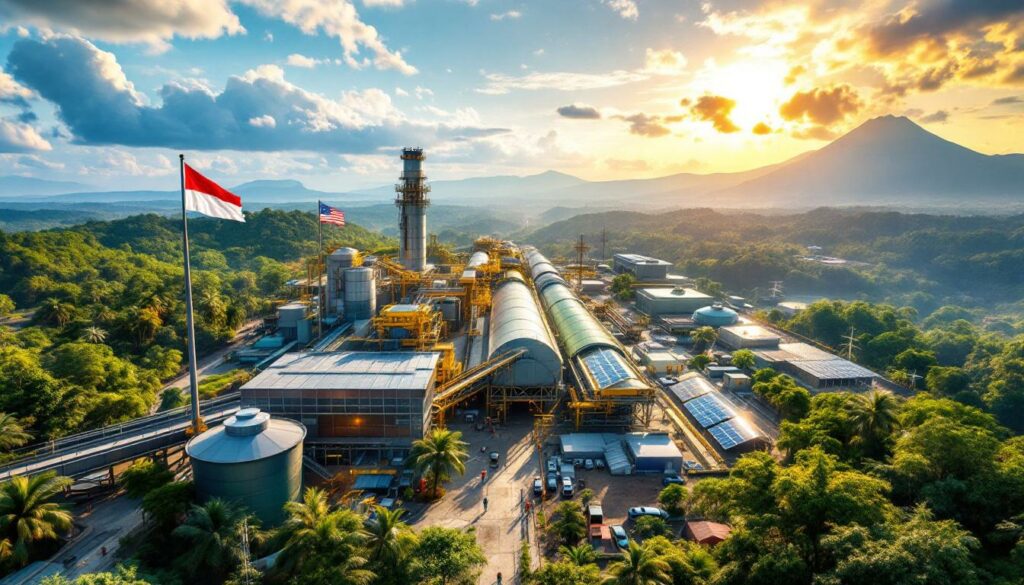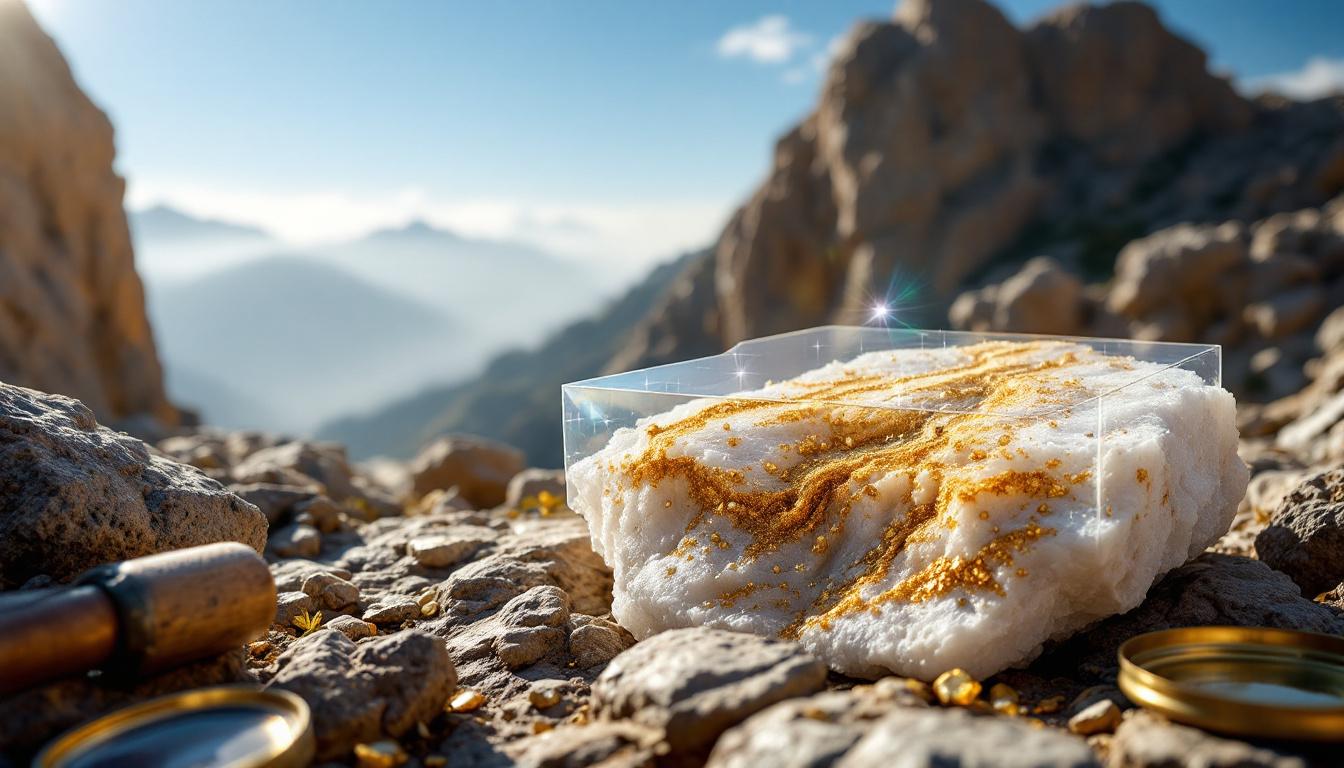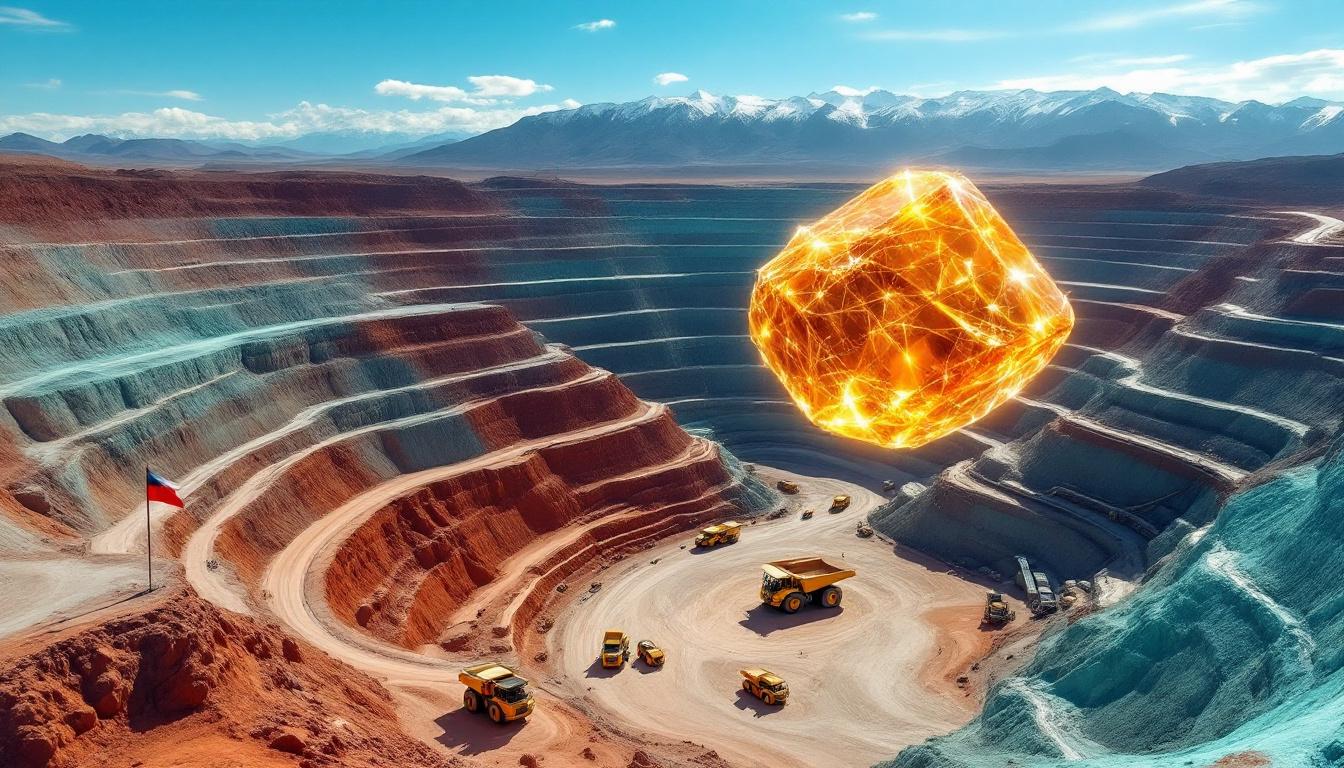What Are Critical Minerals and Why Do They Matter?
The Strategic Importance of Critical Minerals in Global Supply Chains
Critical minerals represent the foundation of modern technology and clean energy transitions. These resources—including nickel, cobalt, lithium, rare earth elements, and copper—have become increasingly vital for everything from smartphones to solar panels. Unlike common commodities, critical minerals face unique supply vulnerabilities due to geographic concentration, geopolitical tensions, and processing bottlenecks.
The importance of these minerals extends beyond economic considerations into critical minerals energy security and energy independence. According to the International Energy Agency, demand for minerals like lithium could increase by up to 4,000% by 2040 as countries race toward carbon neutrality. This explosive growth has transformed these once-obscure resources into strategic assets that nations are scrambling to secure.
"Critical minerals are the oil of the 21st century—whoever controls these supply chains will shape the future of technology and energy systems." — Industry analyst perspective commonly expressed at mining conferences
As manufacturing shifts toward electrification, these minerals become even more crucial. A single electric vehicle requires six times the mineral inputs of a conventional car, including approximately 175 pounds of copper, 110 pounds of nickel, and 45 pounds of manganese. The renewable energy sector shows similar dependencies, with wind turbines requiring specialized rare earth magnets and solar panels depending on various critical elements.
Indonesia's Position in the Global Critical Minerals Market
Indonesia stands as a mineral powerhouse, particularly in nickel, where it controls approximately 21% of global reserves according to the U.S. Geological Survey. This outsized influence has transformed dramatically since the country implemented its raw ore export ban in 2020, shifting from simple extraction to value-added processing.
The country's rise in the critical minerals space represents one of the most significant shifts in global mining industry evolution in recent decades. Indonesia's nickel production reached 1.6 million tonnes in 2023, making it the world's largest producer by a substantial margin. Their reserves are particularly valuable because they contain both limonite and saprolite ores, making them suitable for both stainless steel and battery applications.
What sets Indonesia apart is the quality and accessibility of its deposits:
- High nickel content: Many Indonesian laterite deposits contain 1.5-2.0% nickel, above global averages
- Co-located cobalt: Indonesian nickel typically contains recoverable cobalt (0.05-0.1%)
- Proximity to surface: Many deposits allow for efficient open-pit mining
- Coastal access: Most mining regions have relatively easy access to shipping infrastructure
Indonesian nickel's importance to global battery supply chains cannot be overstated. The country's HPAL (High Pressure Acid Leach) projects are increasingly producing battery-grade materials that meet the strict specifications required by EV manufacturers. This vertical integration strategy has attracted major investment from battery giants seeking to secure upstream supply.
How Is Indonesia Leveraging Critical Minerals in US Relations?
Indonesia's Strategic Offer for Joint Investment
Indonesia has strategically positioned its mineral wealth as a diplomatic and economic lever in its relationship with the United States. According to Economic Minister Airlangga Hartarto, Indonesia has formally "offered the United States the chance to jointly invest in a critical minerals project" as part of ongoing tariff impact on investments negotiations between the two nations (Reuters, June 30, 2025).
This offer represents a sophisticated approach to economic diplomacy, using Indonesia's resource advantages to potentially secure more favorable trade terms. While specific details of the proposal remain undisclosed, the timing coincides with increasing US efforts to reduce dependency on Chinese mineral supply chains.
The joint investment proposal likely focuses on Indonesia's extensive nickel and cobalt resources, which align with America's critical mineral needs for electric vehicle manufacturing and renewable energy mining solutions. This potential partnership would represent a significant shift in US-Indonesia economic relations, which have historically centered on traditional exports rather than strategic resource development.
The Role of Indonesia's Sovereign Fund in Mineral Development
A critical component of Indonesia's proposal involves Danantara Indonesia, the country's sovereign wealth fund, which has been designated as a key participant in any potential joint mineral ventures with the United States. This strategic choice elevates the proposal beyond a simple commercial arrangement to a state-level partnership.
Danantara Indonesia was established to attract foreign investment into strategic sectors while maintaining Indonesian interests in national assets. With critical minerals now classified as strategic resources, the fund's involvement signals Indonesia's intention to maintain significant control over development while still welcoming foreign expertise and capital.
The sovereign fund approach offers several advantages:
- Risk mitigation: Distributes financial risk between Indonesia and US partners
- Streamlined approvals: Can accelerate regulatory processes that often delay mining projects
- Technical knowledge transfer: Creates institutional framework for capacity building
- Long-term investment horizon: Aligns with the extended timelines typical of mineral development
This structure mimics successful models seen in other resource-rich nations like Saudi Arabia and Norway, where sovereign funds have effectively leveraged natural resources for long-term national development while maintaining strategic control.
What Trade Issues Are Being Addressed Through Mineral Cooperation?
Current Tariff Negotiations Between Indonesia and the US
The mineral investment offer emerges as part of broader trade discussions focused on tariff structures affecting Indonesian exports to American markets. While specific tariff details remain undisclosed, the proposal suggests Indonesia is leveraging its critical mineral resources as a bargaining chip to secure more favorable trade terms across multiple sectors.
Indonesia has historically faced tariff and non-tariff barriers for various exports to the US market, particularly in manufactured goods that compete with American products. By offering preferential access to critical minerals that the US desperately needs for its energy transition, Indonesia appears to be seeking reciprocal market access.
The timing is particularly strategic given the US Inflation Reduction Act's emphasis on sourcing critical minerals from free trade agreement partners. While Indonesia does not currently have a comprehensive free trade agreement with the United States, this mineral cooperation could potentially serve as a stepping stone toward broader trade arrangements.
Balancing Economic Interests and Strategic Partnerships
Indonesia's approach reflects a sophisticated balancing act between maximizing economic benefits from its resources while building strategic international partnerships. The country has implemented aggressive resource nationalism policies—such as the ban on raw nickel exports—while simultaneously courting international investment for downstream processing.
This dual approach has proven remarkably successful in the nickel sector, where Indonesia has:
- Increased the value of its mineral exports by transitioning from raw ore to processed materials
- Created thousands of higher-paying jobs in processing facilities
- Attracted over $20 billion in foreign investment into mineral processing
- Maintained strategic control of its resource development trajectory
The potential US partnership would continue this balancing act, providing Indonesia with technology transfer and market access while maintaining sovereign control through Danantara's involvement. For the US, the arrangement would secure access to battery materials outside of Chinese influence, though likely at the cost of accepting Indonesia's value-added processing requirements.
How Does This Fit Into Global Critical Minerals Competition?
US Strategy for Securing Critical Mineral Supply Chains
The Indonesia proposal aligns perfectly with America's intensifying efforts to reduce dependency on Chinese-controlled mineral supply chains. The Biden administration has prioritized "friend-shoring" critical minerals—developing supply chains with allied or friendly nations rather than geopolitical competitors.
US policies supporting this approach include:
- The Defense Production Act's critical minerals provisions
- The Inflation Reduction Act's domestic content requirements
- The CHIPS Act's supply chain security measures
- Expanded financing through the US International Development Finance Corporation
These initiatives reflect recognition that the US currently depends on China for processing of many critical minerals, even when raw materials originate elsewhere. For instance, China controls approximately 85% of rare earth element processing and 75% of lithium-ion battery manufacturing capacity globally.
An Indonesia partnership would represent a significant victory for US strategic planners seeking to diversify away from this dependency. Indonesia's processing capacity—developed ironically with significant Chinese investment—could be redirected partially toward US supply chains through this new partnership.
Competition with China's Mineral Investments in Indonesia
The proposed US-Indonesia partnership enters a field already dominated by Chinese investment. China has established a commanding presence in Indonesia's mineral sector, particularly in nickel processing and battery material production. Most notably, a $6 billion power battery project signed in 2022 between Indonesia Battery Corporation and Chinese battery giant CATL demonstrates the scale of existing Chinese commitment (Reuters, June 29, 2025).
This massive battery plant is expected to be operational by the end of 2026, creating an integrated supply chain from nickel mining through battery cell production. The project exemplifies China's comprehensive approach, which typically bundles financing, construction, technology transfer, and offtake agreements into package deals that are difficult for Western companies to match.
The comparison reveals key differences in approach between Chinese and potential US-China trade strategies:
| Aspect | Chinese Model | Potential US Model |
|---|---|---|
| Financing | State-backed concessional loans | Private investment with potential EXIM support |
| Technology | Complete transfer with ownership limits | Selective transfer with IP protections |
| Labor | Often relies on Chinese workers for key roles | Likely emphasis on local workforce development |
| Environmental | Variable standards based on local requirements | Potentially higher environmental requirements |
| Governance | Less emphasis on transparency | Likely greater focus on anti-corruption measures |
Any US-Indonesia partnership would need to offer compelling advantages beyond what Chinese firms have already established, potentially emphasizing higher environmental standards, better labor practices, or premium market access for Indonesian products.
What Economic Benefits Could Result from This Partnership?
Potential Investment Scale and Project Scope
While specific investment figures for the proposed US-Indonesia critical minerals project remain undisclosed, comparable ventures in the sector suggest potential capital commitments reaching into billions of dollars. Based on similar projects in Indonesia's mineral processing sector, we can reasonably expect:
- Initial investment: $500 million to $3 billion depending on scope
- Processing capacity: 50,000-100,000 tonnes of battery-grade materials annually
- Development timeline: 3-5 years from agreement to production
- Technology focus: HPAL or similar advanced processing for battery-grade materials
The most likely project structure would involve a processing facility rather than purely extraction operations, given Indonesia's consistent emphasis on domestic value addition. This would align with Indonesia's downstream industrialization goals while providing the US with processed materials ready for battery manufacturing.
The economic multiplier effect could be substantial, with every dollar invested in mineral processing typically generating $2-3 in additional economic activity through supplier networks, services, and consumer spending in surrounding communities.
Job Creation and Economic Development Prospects
Critical mineral projects generate significant employment across the value chain, with processing facilities creating particularly valuable technical positions. Based on existing operations in Indonesia, a joint US-Indonesia venture could potentially create:
- Construction phase: 2,000-5,000 temporary jobs
- Operational phase: 500-1,500 permanent direct jobs
- Indirect employment: 2,000-4,500 jobs in supporting industries
- Induced employment: 1,000-3,000 jobs from broader economic activity
"The real value of mineral processing isn't just in the facility itself, but in the ecosystem of technical expertise, services, and supporting industries that develops around it." — Mining economist observation from similar projects
Beyond raw employment numbers, the quality of jobs created would be significant. Processing facilities require engineers, technicians, laboratory specialists, and other skilled positions that command salaries 2-3 times higher than typical manufacturing jobs. These positions create pathways for technical education and workforce development that can transform regional economies.
The partnership could accelerate technology transfer in areas including:
- Advanced hydrometallurgical processing
- Environmental management systems
- Quality control and assurance
- Automation and process control
- Supply chain management
These capabilities would strengthen Indonesia's broader industrial base while providing the US with a more reliable and transparent supply chain for critical battery materials.
How Does This Relate to Indonesia's Broader Mineral Policy?
Indonesia's Downstream Processing Requirements
Indonesia's offer to the US must be understood in the context of its transformative mineral policies implemented since 2020. The country's ban on raw nickel ore exports represented one of the most ambitious resource nationalism policies globally, effectively forcing miners to build domestic processing facilities or cease operations.
This bold policy shift has yielded remarkable results:
- Nickel processing capacity increased from approximately 20 million tonnes to over 50 million tonnes annually
- Value of nickel exports rose from $3 billion to over $30 billion between 2020-2024
- Foreign direct investment in mineral processing exceeded $20 billion in three years
- Wage premiums in mining regions increased by 30-40% as processing created higher-value jobs
Any US partnership would necessarily accommodate Indonesia's unwavering commitment to domestic processing. This represents both a challenge and opportunity for US investors, who would need to commit to building or investing in processing facilities rather than simply securing raw material exports.
The US-Indonesia partnership would likely focus on higher-value battery materials rather than intermediate products like nickel pig iron or ferronickel. This aligns with Indonesia's ambition to move further up the value chain into battery precursor and cathode active material production.
Environmental and Sustainability Considerations
Indonesia faces significant environmental challenges in expanding its mineral processing sector. Current processing operations rely heavily on coal-fired power, creating a carbon-intensive supply chain that conflicts with the clean energy goals of end users like electric vehicle manufacturers.
A US partnership would likely need to address these environmental concerns more comprehensively than existing operations. Potential approaches include:
- Renewable energy integration: Dedicated solar or geothermal power for processing facilities
- Dry stack tailings: More expensive but environmentally superior waste management
- Water recycling systems: Reducing freshwater consumption and contamination risks
- Biodiversity offsets: Preserving equivalent habitats to compensate for mining disturbance
The Indonesia-US partnership presents an opportunity to establish higher environmental standards than those currently prevalent in the sector. This could include adopting international frameworks like the Initiative for Responsible Mining Assurance (IRMA) or the Copper Mark, which set comprehensive standards for responsible resource development.
Such an approach would not only mitigate environmental impacts but potentially create market advantages, as battery and EV manufacturers increasingly scrutinize the environmental footprint of their supply chains. Manufacturers like BMW, Tesla, and Volkswagen have all announced policies requiring suppliers to meet stringent environmental and social performance metrics.
What Are the Geopolitical Implications of This Partnership?
Strategic Positioning in the Indo-Pacific Region
A strengthened US-Indonesia partnership in critical minerals would have significance far beyond the economic sphere, potentially reshaping strategic alignments in the Indo-Pacific region. Indonesia occupies a pivotal position both geographically and diplomatically, making it a key player in regional power dynamics.
For the United States, deepening economic ties with Indonesia through critical minerals cooperation serves multiple strategic objectives:
- Countering China's Belt and Road influence in Southeast Asia
- Strengthening relationships with the world's third-largest democracy
- Supporting a key ASEAN member as regional integration accelerates
- Demonstrating commitment to the Indo-Pacific Economic Framework
For Indonesia, the partnership offers a way to diversify strategic relationships while maintaining its traditional non-aligned foreign policy. By balancing mineral partnerships between Chinese and American interests, Indonesia gains leverage and reduces dependence on any single partner.
This balancing act reflects Indonesia's sophisticated approach to great power competition, where it seeks to extract maximum benefit from rivalries without becoming exclusively aligned with either side. The involvement of Danantara, Indonesia's sovereign wealth fund, in the proposed critical minerals project underscores the strategic rather than purely commercial nature of the arrangement.
Impact on Regional Economic Integration
The proposed partnership could accelerate regional economic integration by creating new supply chain linkages across the Indo-Pacific. Critical minerals processing in Indonesia could connect to manufacturing in countries like Japan, South Korea, and potentially India, creating a more resilient regional economic architecture less dependent on Chinese inputs.
This regional integration potential aligns with emerging frameworks like:
- The Indo-Pacific Economic Framework (IPEF)
- The Quad's critical minerals working group
- ASEAN's connectivity initiatives
- Japan's "Partnership for Quality Infrastructure"
These frameworks seek to create alternatives to China-centered supply chains while respecting sovereignty and promoting sustainable development. A successful US-Indonesia critical minerals partnership could serve as a template for similar arrangements throughout the region, potentially including the Philippines (with its nickel resources) or Vietnam (with rare earth potential).
Such integration would strengthen economic resilience in the face of supply chain shocks while creating political constituencies for continued cooperation. The mineral-to-manufacturing linkages could generate mutual interests that survive political changes in participating countries, creating durable economic interdependence.
FAQs About Indonesia-US Critical Minerals Cooperation
What specific minerals might be included in the Indonesia-US partnership?
The partnership would likely focus primarily on nickel and cobalt, where Indonesia has significant reserves and growing processing capacity. Indonesia holds approximately 21% of global nickel reserves and produces nickel with valuable cobalt content (typically 0.05-0.1% in laterite deposits).
These minerals are particularly critical for electric vehicle batteries, with nickel providing energy density and cobalt enhancing stability and cycle life. As battery chemistries evolve toward higher nickel content (NCM 811 and NCA), securing these supplies becomes increasingly strategic for US manufacturers.
Other minerals that might be included:
- Copper: Indonesia has significant copper reserves, particularly at the Grasberg mine
- Manganese: Used in virtually all battery chemistries and steel production
- Bauxite: Indonesia has restricted raw exports similar to nickel
- Rare earth elements: Indonesia has undeveloped but promising deposits
The partnership would likely
Want to Stay Ahead of the Next Major Mineral Discovery?
Discovery Alert's proprietary Discovery IQ model provides real-time notifications on significant ASX mineral discoveries, transforming complex geological data into actionable investment insights. Visit our discoveries page to see why major mineral discoveries can lead to exceptional returns and start your 30-day free trial today.




